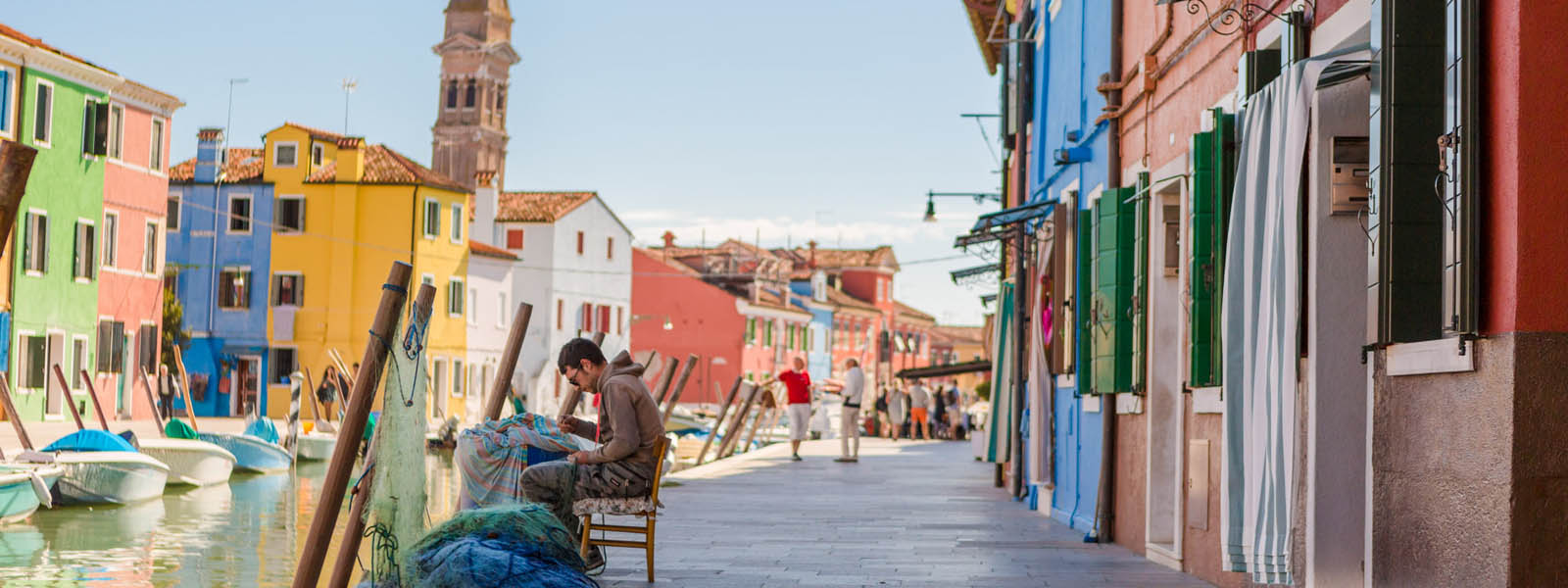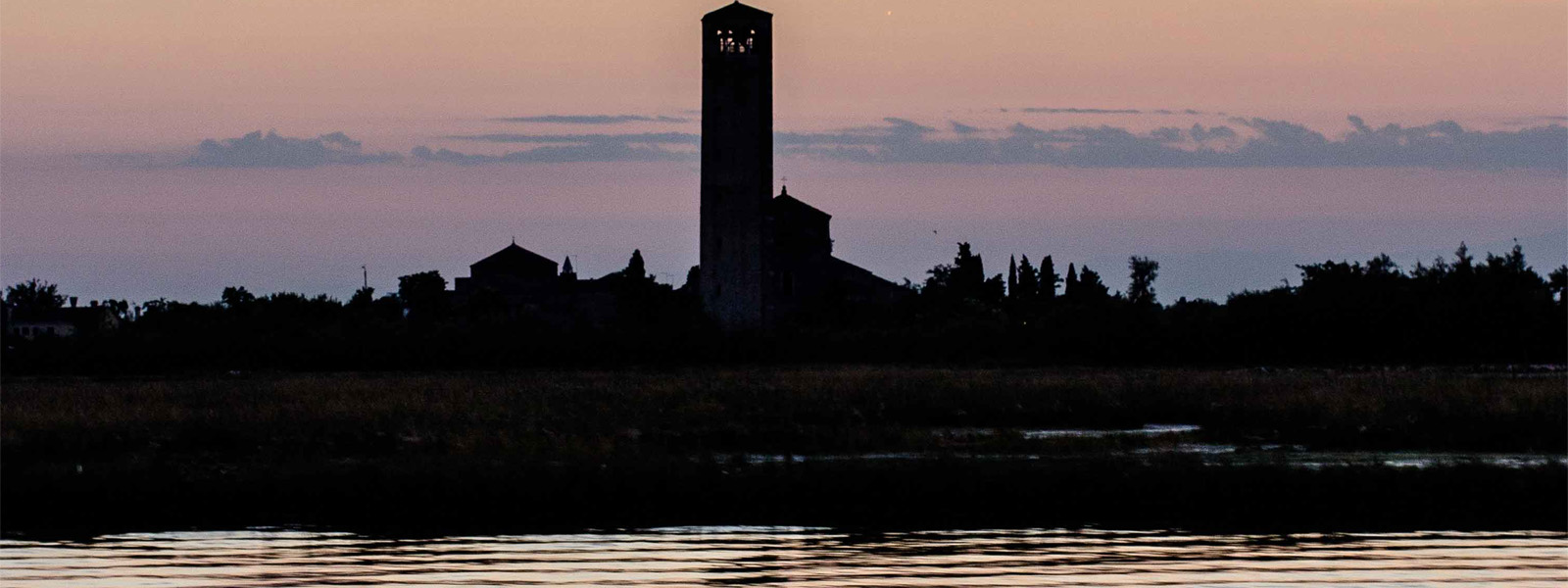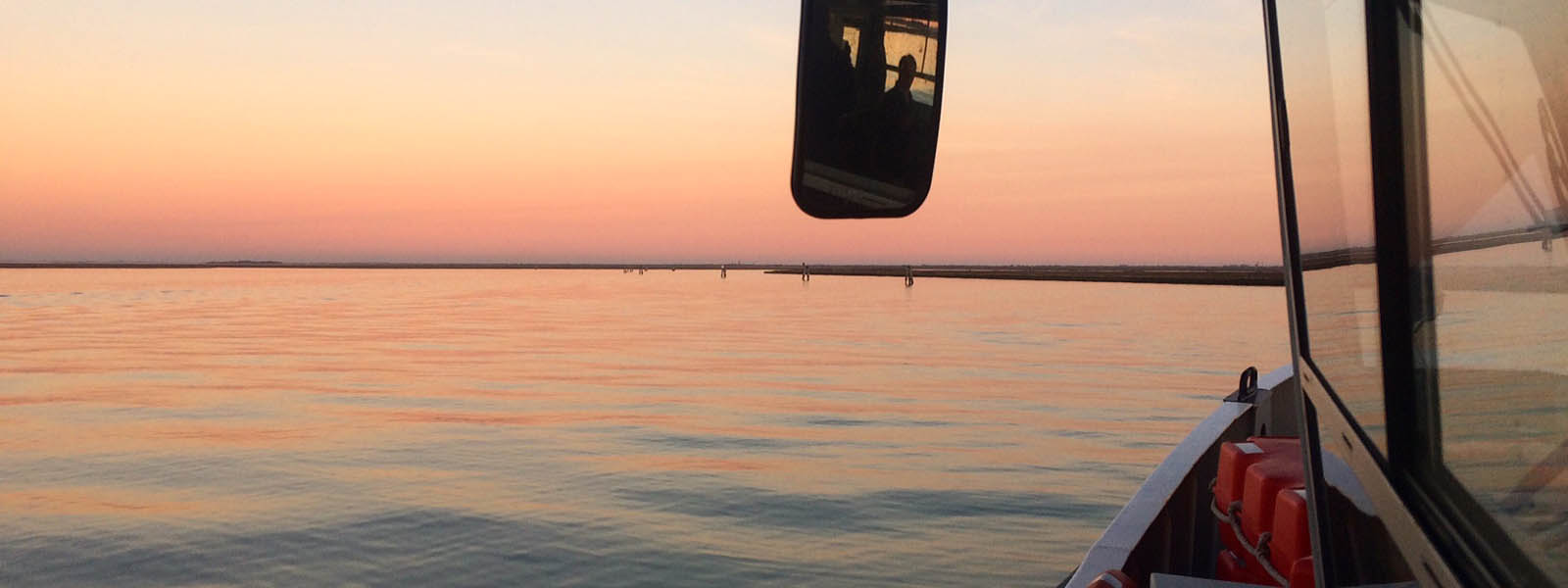THE RAINBOW-COLORED ISLAND
As soon as the boat approaches the green waters of the lagoon near Burano, you will sense that you have arrived in a magical place: a collection of little islands on the water; a tiny but infinite world. Mazzorbo, Torcello, and Burano have it all: here, your eyes go beyond the colorful houses, the shore, the gardens, and the water, all the way to the mountains that you can admire on clear days. There is perhaps no other place in the world where so much natural beauty and the rhythms of daily life come together with such perfection. Here, the way of life is pleasantly slow, following the ebb and flow of the lagoon waters and the vivacity of the traditions and ways of life that existed once uponTHE WOODEN BRIDGE
The island of Burano, which is connected to Mazzorbo by a long wooden bridge, is part of what has historically and geographically been referred to as the “northern lagoon.” Legend has it that this archipelago has been inhabited since 639 AD, the year in which the cathedral of Santa Maria Assunta on Torcello was founded by the Altinati, who were running from Attila the Hun’s army. Before that date, the lagoon was not yet inhabited, and where today we see colorful little houses, gardens, a majestic cathedral, and ancient palazzos, there was only mud and water. Native Venice was born right here, on the clayey sandbars that covered nearly 80% of the 60,000 hectares of lagoon. From time immemorial, the area was home to seabirds, all kinds of fish, and colonies of flamingos, all surrounded by a vast expanse of tiny flowers called Limonium. The Altinati planted millions of tree trunks in the sandbars to stabilize them, and they made their lives here. Venice, as we think of it today, had yet to exist. Burano was populated at the same time as Torcello and Mazzorbo, and it was named for the Porta Boreana, one of the entryways into the walled city of Altino. There have been many tales written about the history of Burano, which have accompanied it through the years. Today, the little island is spectacular, with its brightly painted houses that make it one of the most colorful in the world. Here, fishing is still a main occupation and women continue the art of lace, better known by the name Merletto di Burano.
COLORS AND FISHING
Now that you’ve arrived, let yourself be enchanted by the atmosphere of the island. Walking through the tiny little alleyways of Burano, you will be inebriated by glimpses of blue, pink, red, orange, violet. Here, color is a way of life, and almost annually, the residents repaint the facades of their homes from top to bottom, and you see them admire the result with pride, their hands dirty with paint and the high ladders used to reach the roofs. The people are the best part of Burano – the Buranelli as they’re called, and they have names like Maria, Tina, Bepi, Arturo. For centuries, they have cared for the beauty of the island. How many people live on Burano? Almost 2,750 – very few, but then again, a lot compared to the nine on Torcello. Today, every family has the honor to choose the color of its house, but in the past, that wasn’t allowed, because at one time the colors were dictated by the local government and could not be changed. Fortunately, today, the rule is less rigid, and residents can express their personalities with one, two, or a thousand colors, as with Bepi’s house on Via del Gotolo, Gianfranco Rosso’s house near the Fondamenta Park, or the “Lego House” behind the church. In these cases, the owners seem to have been undecided about what color to choose and mixed them all, making their homes seem like rainbows.
BEPI’S HOUSE
The colored houses are just one of the treasures Burano, which has many other things to discover: the cuisine, for example, with dishes like risotto, fish, and the delicious cookies called Essi and Bussolà. The cookie recipes are well known (1 kilo of flour, 3 grams of butter, 6 grams of sugar, 12 eggs, a bit of vanilla, and a little lemon), but for the so-called risotto di gò, the king of Burano’s cuisine, the recipe is still top secret, passed down carefully from mother to daughter. After a fabulous lunch, it’s time for a walk, when you can lose yourself in the most fascinating corners of the island. You can do so on your own, or guided by a local. Some sights will take you off guard, like the incredible views of the lagoon, or certain unique houses. Others you’ll have to look for, like the home of Remigio Barbaro, or the best corner from which to admire the leaning tower. No, it’s not an illusion: the tower of Burano is really crooked.THE LEANING TOWER
As opposed to the tower of Pisa, the belltower of Burano was perfectly straight when it was constructed in the 17th century, but it was raised from 54 meters to 64 meters in 1774 to satisfy the new tastes of the architect at the time, who, having enlarged the adjacent church dedicated to San Martino Vescovo of Tours, also wanted to lenghthen the belltower. Perhaps not correctly calculating the pressure that the new weight of the tower would have on the old foundation of tree trunks and mud, the architect soon saw that the tower was leaning toward the south, first almost imperceptibly slowly, but then suddently accelerating one night 50 years ago: the sudden movement actually made the bell ring. The islanders were more than a little alarmed, but an immediate intervention was able to stop the tower from leaning further. Today, it still leans about 1.85 meters sul baricentro. The rest is history, and now Burano can also add this to the list of things that makes it a truly special place.
LACEMAKING
The time has come to take a closer look at the centuries-old technique of lacemaking, called merletto. You can visit the Museo del Merletto (open from 10am’4:30pm, closed Monday), where every morning on the second floor you’ll find a group of lace makers seated on their wooden chairs… or, you can go to one of the stores on Via Galuppi, where generations of storeowners have gathered collections of inestimable worth. This art has been practiced on Burano since 1500 by women who waited for their husbands’ return from their fishing expeditions and passed the time by entertaining themselves with lace. Merletto is actually different from embroidering, because it is not done by passing the needle along the fabric, but by always keeping it on the surface in the air. The execution is a triupdio of punti with strange names like ghipur, sacola ciaro, Greco redin, and the punto Venezia, many little bars of yarn that, like the bridges of Venice, connect all the work, which will then be released by expert hands and sold as an authentic work of art. Because that is what Merletto di Burano is: an art form that will soon be included in the UNESECO World Heritage Patrimony. To complete the experience on Burano, you can’t do without a boat ride accompanied by one of the island’s fishermen, who are masters of their trade and will show you hidden corners of the lagoon and incredible beauty, or a romantic walk on Mazzorbo, Burano’s sister island. All you have to do is cross the wooden footbridge connecting the two islands and let yourself be enchanted by the rural world of gardens and vineyards: Mazzorbo, once called Mayurbis, noble and densely populated. Here, you find the beautiful church dedicated to Saint Catherine of Alessandria, with its ceiling made of upside-down naves, and the Madonna by the artist Remigio Barbaro. And you must stop for a moment to listen to the sound of the oldest bell in the lagoon: they say that it has the power to ward off any storm with its impressive sound waves.
THE ISLAND OF TORCELLO
If history is a circle that closes itself, the last stop of your visit should without a doubt be Torcello, perhaps toward dusk, when most of the tourists have returned to Venice. Here, where the history of Venice began before Venice itself, you can still find Byzantine reperti, an ancient winged lion, and the majesty of the gold mosaics in the Cathedral of Santa Maria Assunta, which never fail to leave people speechless. Going from Torcello back toward Burano, you will once again find yourself in front of the spectacular sight of the colored houses on the water, or maybe you’ll take a moment for one last photo, or you’ll find the perfect spot to steal a kiss or to make a toast with a glass of wine under the starry sky. And if you see a falling star, there’s no need to make a wish: it’s already come true.Text by Silvia Zanella
author of the book A Burano con Romeo
and guide for
www.discoverburano.com
Original tour of Burano since 2016





